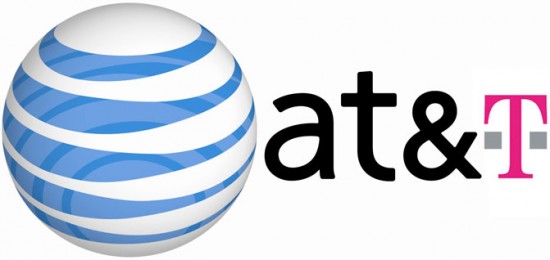AT&T Files T-Mobile Merger Proposal with FCC

Despite the continued protest of Sprint and others in the wireless industry, AT&T has submitted its proposal detailing the acquisition of T-Mobile to the FCC. Detractors argue that the merger would stifle competition as Verizon and AT&T would emerge as the only viable contenders in the US. AT&T is prepared to argue that acquiring T-Mobile will allow them to bring 4G LTE services to 97 percent of the United States, tracking the growing demand for wireless and bringing high-speed services to areas that otherwise would be left without. It’s a tough call, but luckily we aren’t the ones that have to make it. One FCC official sees no way the deal will pass, but something tells us this one won’t be that simple. In the end the results will trickle down to the consumer, good or bad.
AT&T Files Public Interest Statement With FCC on T-Mobile Acquisition
Dallas, Texas, April 21, 2011
AT&T Inc. (NYSE: T) today filed with the Federal Communications Commission its Public Interest Statement regarding its proposed acquisition of T-Mobile USA. The filing demonstrates the numerous benefits of the merger, including the deployment of 4G LTE network technology to more than 97 percent of the population. When the parties announced this transaction in March 2011, AT&T initially stated that it would deploy LTE to 95 percent of the U.S. population. After conducting a more refined analysis of the combined network, AT&T is increasing the scope of this commitment to 97.3 percent. This deployment will help fulfill this Administration’s pledge to connect every part of America to the digital age, and it will create new jobs and economic growth in the small towns and rural communities that need them most.
The publicly available filing, with certain portions containing competitively confidential information redacted, is available at www.MobilizeEverything.com.
Additional highlights of the filing include:
AT&T has helped make the United States the global leader in mobile broadband and smartphone sales. AT&T’s mobile broadband leadership, however, presents it with unique spectrum and capacity challenges. A smartphone generates 24 times the mobile data traffic of a conventional wireless phone, and the explosively popular iPad and similar tablet devices can generate traffic comparable to or even greater than a smartphone. AT&T’s mobile data volumes surged by a staggering 8,000% from 2007 to 2010, and as a result, AT&T faces network capacity constraints more severe than those of any other wireless provider.
AT&T is using up its spectrum at an accelerating rate, and the wireless broadband revolution is just beginning. Over the next five years, data usage on AT&T’s network is projected to skyrocket as customers “mobilize” all of their communications activities, from streaming HD video and cloud computing to a range of M2M applications like energy management, fleet tracking, and remote health monitoring. In just the first five-to-seven weeks of 2015, AT&T expects to carry all of the mobile traffic volume it carried during 2010.
This merger provides by far the surest, fastest and most efficient solution to that challenge. The network synergies of this transaction will free up new capacity – the functional equivalent of new spectrum – in the many urban, suburban and rural wireless markets where escalating broadband usage is fast consuming existing capacity.
This transaction will thus benefit consumers by reducing the number of dropped and blocked calls, increasing data speeds, improving in-building coverage, and dramatically expanding deployment of next-generation mobile technology.
The transaction’s benefits arise from the uniquely complementary nature of AT&T and T-Mobile’s GSM/HSPA+ technologies and spectrum holdings.
The combined company expects to integrate a significant portion of T-Mobile cell sites into the AT&T network. Upon network integration, which will benefit customers in as little as nine months, this will equate to “instant” cell splits – increasing cell density and effectively doubling the amount of network traffic that can be carried using existing spectrum in the areas served by those cell sites.
Groups across the political spectrum, including a broad range of consumer, disability, civil rights, and rural advocacy groups have highlighted the transaction’s potential to empower consumers, workers and small businesses to participate more fully in our nation’s broadband society.
The U.S. wireless marketplace is fiercely competitive, characterized by escalating usage, product differentiation, rapid innovation, fierce advertising campaigns, new entry, and sharply declining prices for wireless service by unit of consumption (e.g., minutes or megabytes). In fact, the FCC found last year that approximately three-quarters of Americans live in localities contested by at least five facilities-based wireless providers.1 These other competitors are rapidly growing and investing and will ensure the wireless marketplace remains vibrantly competitive after the transaction.
1Fourteenth Report, Implementation of Section 6002(b) of the Omnibus Budget Reconciliation Act of 1993, 25 FCC Rcd 11407, 11621-22 42-45 (May 20, 2010) (“Fourteenth Wireless Report”).*AT&T products and services are provided or offered by subsidiaries and affiliates of AT&T Inc. under the AT&T brand and not by AT&T Inc.